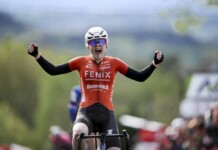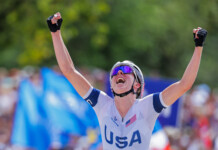By Dave Richards — Have you ever wondered what it’s like to race a bicycle alongside the top riders in the sport? You’ve probably seen a stage or two of the Tour de France on TV watching the riders suffer up steep mountain climbs or bumping and jostling each other while sprinting 40 mph down the Champs-d’Elysees. As a race photographer, I get the best seat in the house – flying alongside the peloton on the back of a motorcycle taking pictures. I spent May 13-20, 2017 following the Amgen Tour of California observing top level racing, up close & personal. Here’s what I found.
The men’s race of the Amgen Tour of California (AToC) was elevated to the World Tour Calendar this year. According to Wikipedia “The UCI World Tour is the premier annual male elite road cycling tour, sitting above the various regional UCI Continental Circuits. It refers to both the tour of 28 events and an annual ranking system based upon performances in these.” The 18 UCI World Tour men’s teams are the best of the best; teams like Sky, BMC, Astana, Cannondale-Drapac among others.15 of the 18 World Tour teams competed at AToC along with several lower level Pro Continental and Continental teams such as United Healthcare and Rally Cycling.
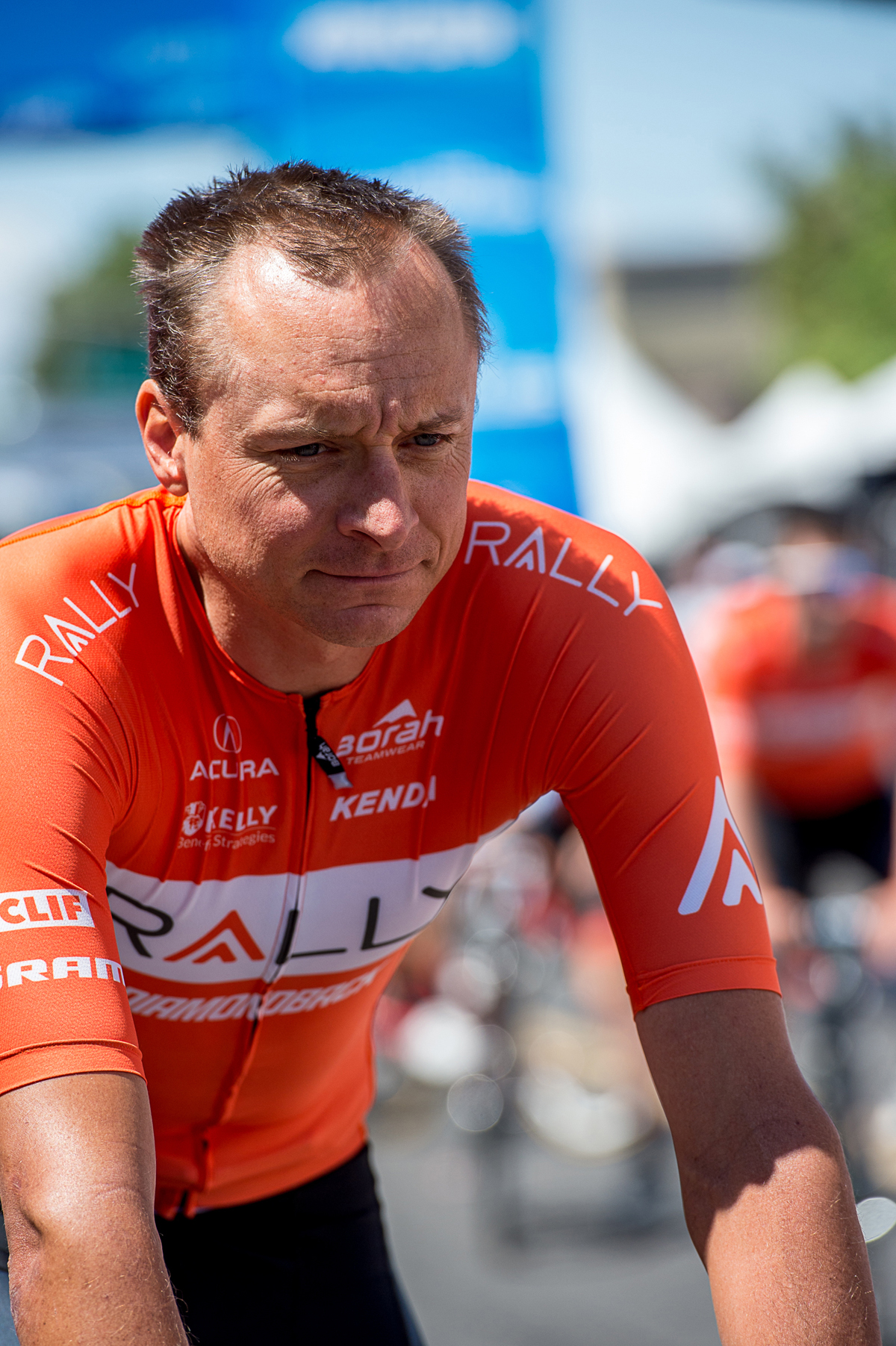
To understand the difference between the different team levels, I spoke with Danny Pate, veteran rider for Rally Cycling. Danny raced extensively in Europe for 15 years including racing for Team Sky, one of the top World Tour teams. As such Danny has seen it all from local club racing in the US to the big events in Europe like the Tour de France. Danny compared World Tour, Pro Continental and Continental race teams to baseball’s Major League, Triple A and Double A. He said as you progress from Continental to World Tour, the teams have more support and more budget. “The only difference is some races they actually play together.” Referring to AToC, “you have all three, the first three tiers all racing together.”
What is it like for the smaller teams to compete against these big teams with their multi-million dollar budgets and superstar riders? I sense sort of a David vs. Goliath story here. To gain a little insight, I spoke with Phil Southerland, founder and director of Pro Continental Team Novo Nordisk. Team Novo Nordisk is unique in that all of its riders are Type 1 diabetics. The riders carry a strong positive message to their young fans who are afflicted with this disease that they too can live normal lives and become athletes themselves. When asked about racing a World Tour event, Phil said, “when you get to the World Tour, everyone is taking it seriously. And all the teams here, there’s big opportunities for points, they’re all gonna try to score them. It’s what drives their sustainability at the World Tour and also the riders contracts for next year is points at World Tour races. It just really elevates the level of competition.”
Phil also talked about how much deeper the organization is at a World Tour race. He mentioned other lower level races that may not have breakfasts for the riders or control errant cars wandering onto the course. Referring to World Tour races “it’s a much more controlled circus. That’s what we are at the end of the day, a moving circus.” He stated, “California has taken a slow approach to get to the World Tour. They’ve made mistakes along the way, but it’s really a world class event now.”
We talked about budgets a bit and what it’s like to compete against big budget teams. “Sky’s got nearly a $40 million budget, they can spend money on everything. They get to manage and control everything….and you got guys on Rally Cycling, they’ve probably got a $2-3 million budget and Jelly Belly which is probably less than a $1 million budget….those kids, this is their big show for the year. It’s their chance to get up a level. It’s really good to see the mixture of US domestic teams get a chance to race with the best in the world.”
Women’s Edition
I would be remiss not to mention the women’s edition of the AToC. The women’s World Tour is in its 2nd year and although it doesn’t yet carry the history nor the depth of the men’s tour, it signals a rise in talent among the women and makes for exciting racing. Unfortunately, my time was limited and I was only able to cover the final stage of the women’s race. The race consisted of 4 stages starting in Lake Tahoe on Thursday, May 11th and finishing with a criterium race around the State Capitol grounds in Sacramento on Sat. May 13th. The crit was sandwiched between the start and the finish of men’s stage 1. The crowds were dense around the Capitol grounds as they were treated to both races that Saturday.
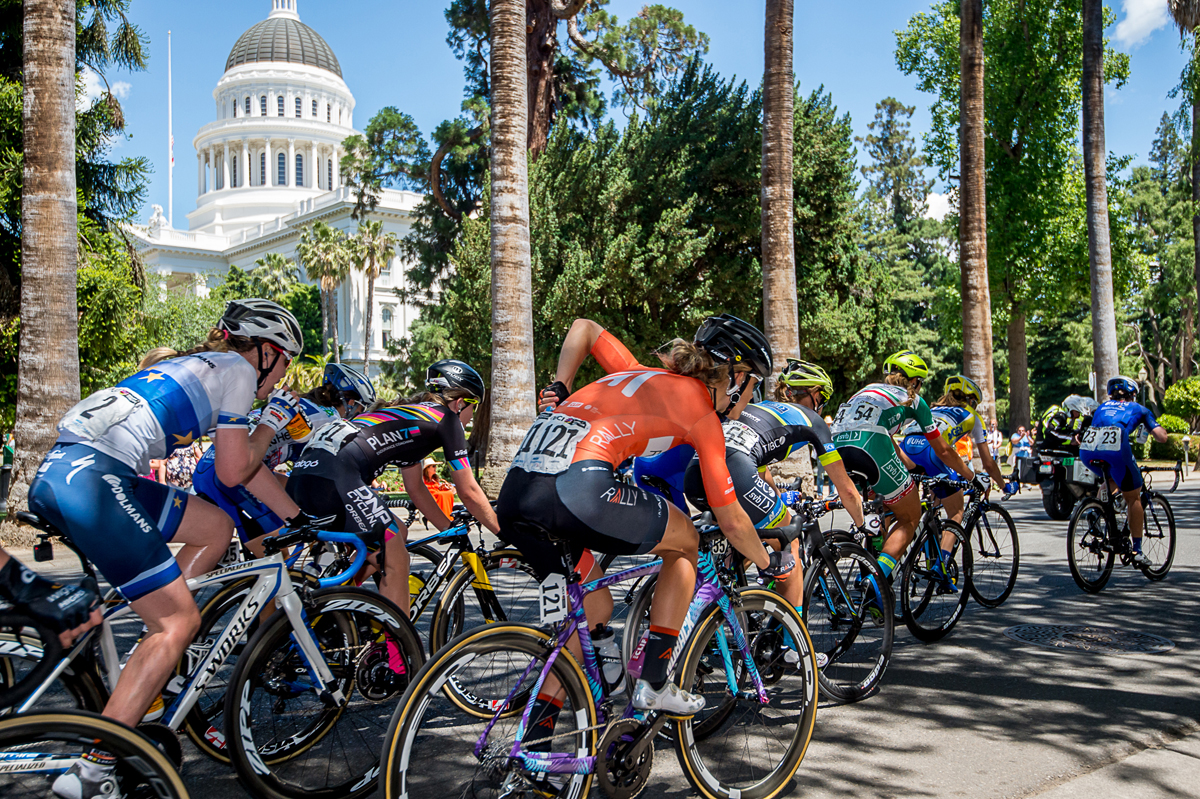
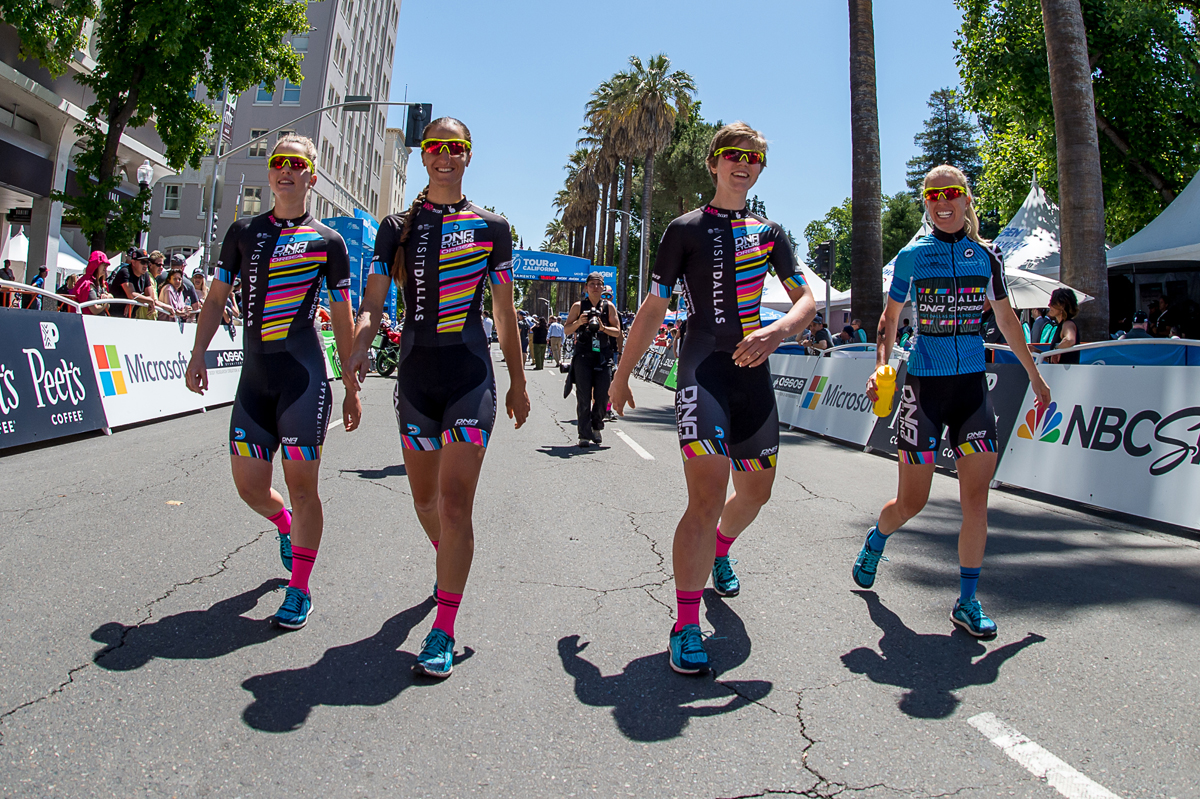
Utah was well represented here by the locally co-owned Visit Dallas DNA Racing Team. Mandy Heintz rode a strong solo break on Stage 3 and although caught by the field, she won the Most Courageous Rider Jersey for her efforts.
Men’s Race Overview
Back to the men’s race. The race consisted of seven stages this year. I won’t bother with a detailed race report here since that info has been available online and on NBC Sports broadcast for several weeks now. I’ll include just a quick summary of the race.
Stage 1 featuring an out and back 104 mile road course starting and finishing alongside the California State Capitol grounds. Marcel Kittel (Quickstep-Floors) beat out other top sprinters Peter Sagan (Bora-Hansgrohe), Elia Viviani (Team Sky) and John Degenkolb (Trek-Segafredo) for the win taking the first yellow jersey.
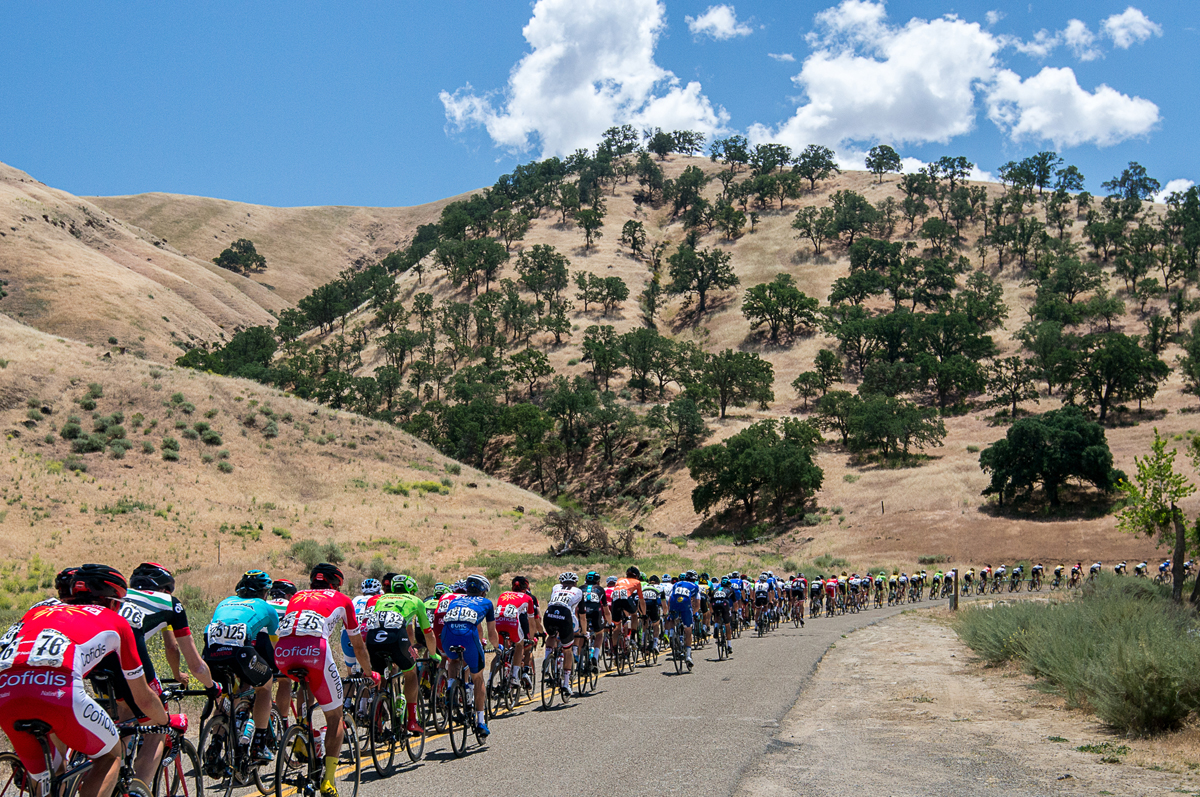
From there the race headed south. The 90 mile long Stage 2 began in Modesto heading west up and over the steep Mt. Hamilton climb finishing in San Jose. The finish consisted of a long uphill drag where Rafal Majka (Bora-Hansgrohe) beat out George Bennett (Team Lotto NL-Jumbo) for the win, taking over the race leader’s yellow jersey.
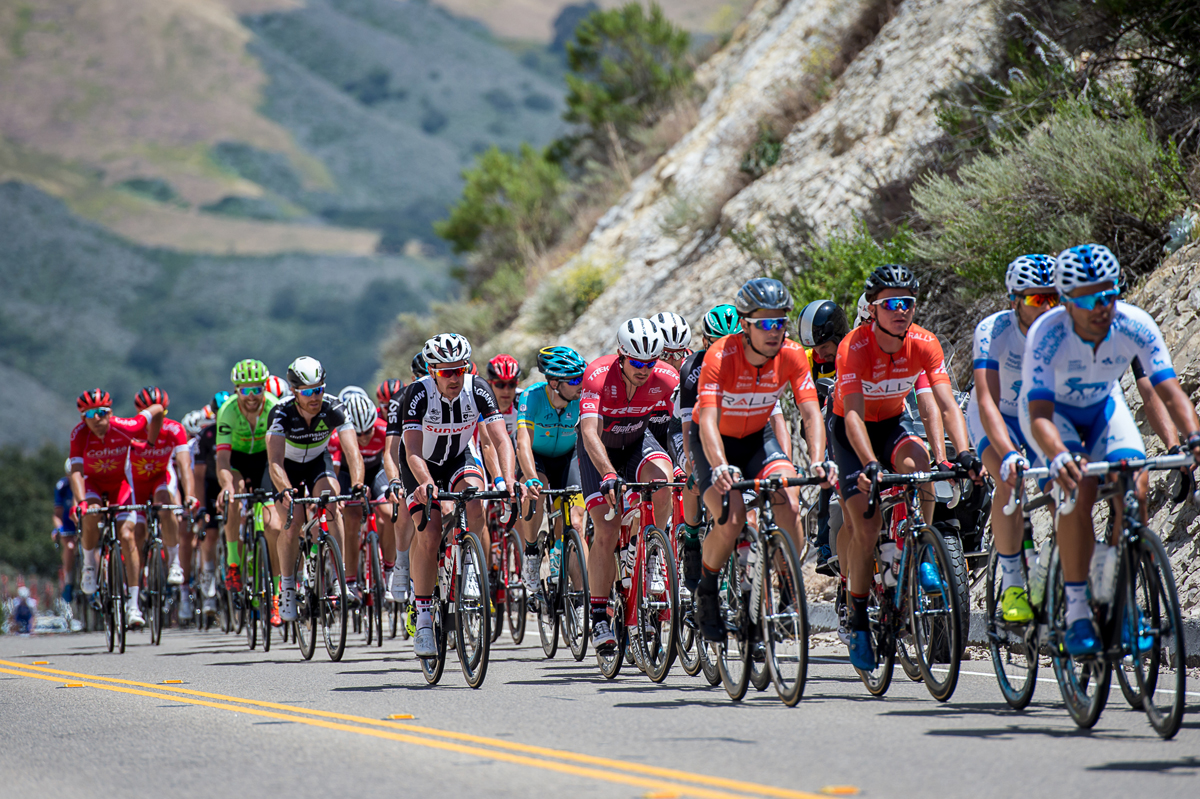
Stage 3 left Pismo Beach heading inland through farm country finishing in Morro Bay for a total of 120 miles. Again, the finish consisted of a long uphill drag overlooking the beautiful coastline of Morro Bay and paid off big-time for Peter Sagan (Bora-Hansgrohe) as he beat top sprinters Rick Zabel and Alexander Kristoff, both of Team Katusha Alpecin, to the line.
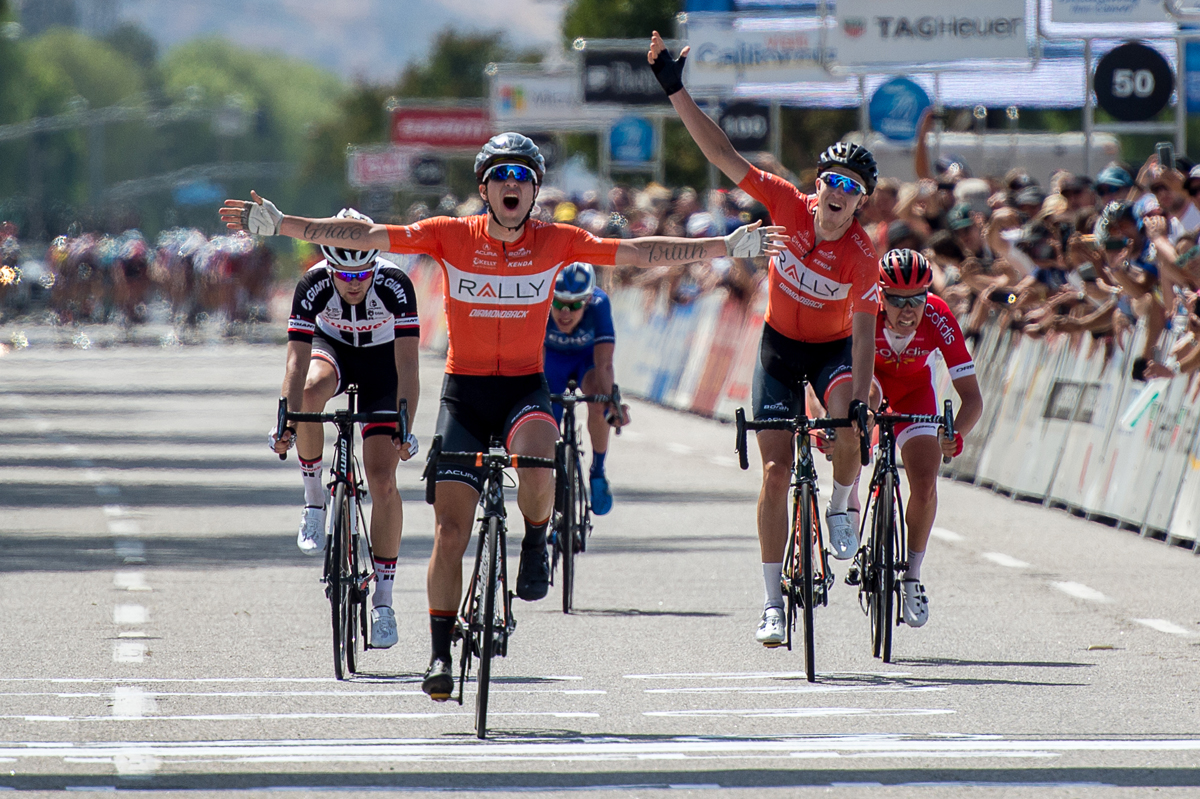
Stage 4 featured a beautiful seaside start in Santa Barbara finishing 99 miles later next to Six Flags Resort in Santa Clarita. Evan Huffman of the US based Continental team Rally Cycling held out with a long breakaway effort to beat the big teams for the win. It’s pretty rare to see a small breakaway ride out front all alone for so long and not be caught by the peloton, swallowed and spit out the back. Especially when you’re a rider on a Continental team. Doubly exciting was that Evan’s teammate Rob Britton took 2nd place that day.
Stage 5 was the 78 mile long Queen Stage starting in Ontario. It included the hair-raising descent down the Glendorra Ridge road looping back to finish at the top of the steep Mt. Baldy climb. Andrew Talansky ended a long drought for Cannondale-Drapac Pro Cycling by winning this stage.
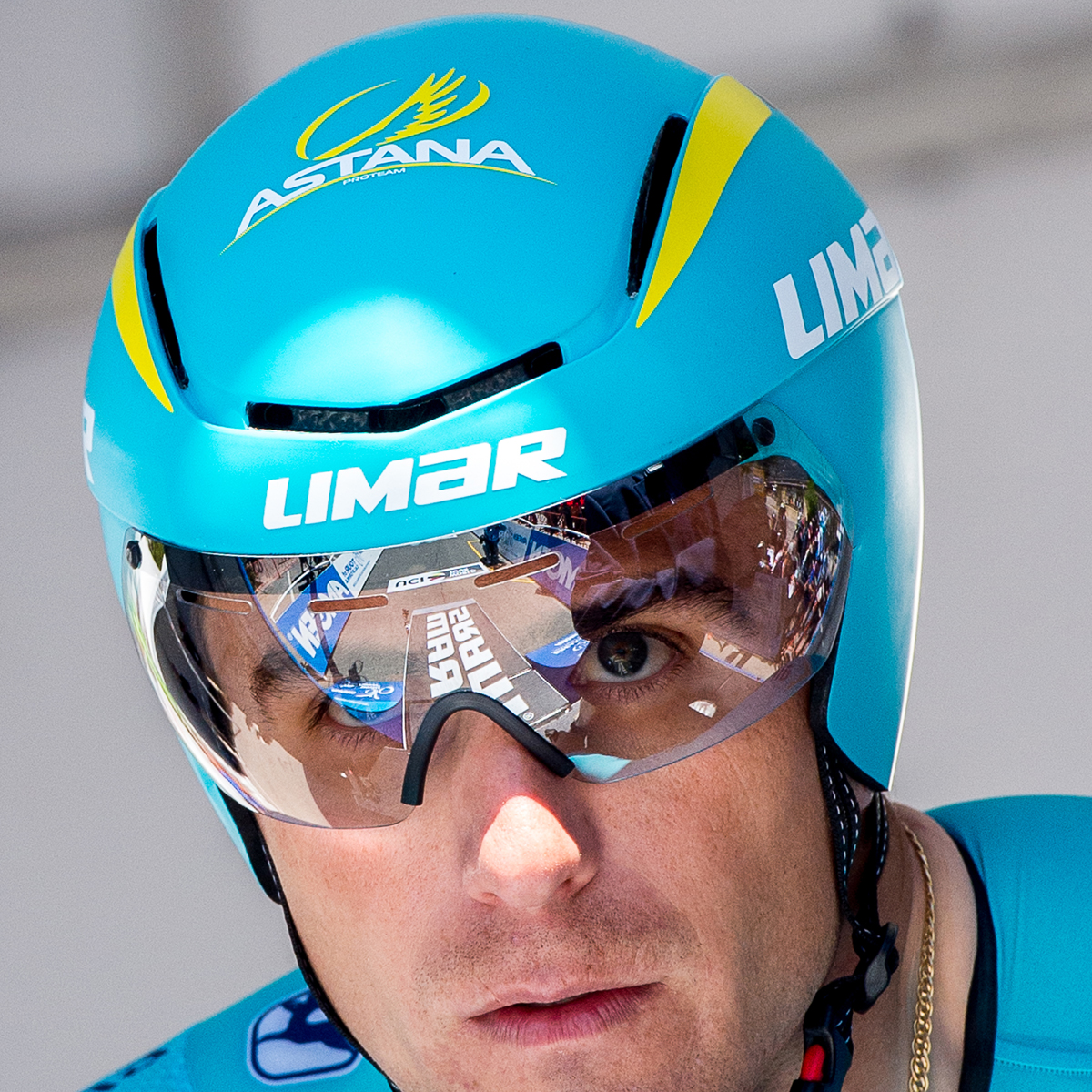
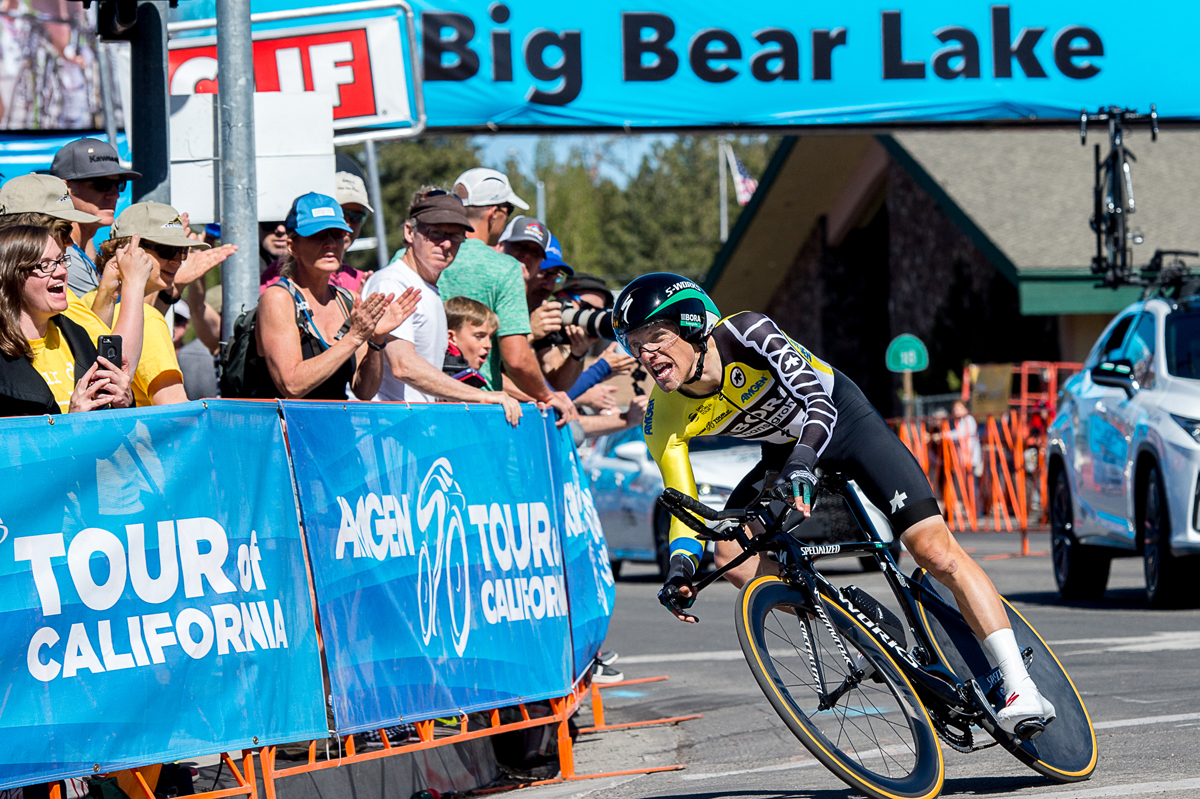
We moved to Big Bear Lake on Stage 6 for an out and back 15 mile individual time trial around the lake with a unique finish on the pier overlooking beautiful Big Bear Lake. Jonathan Dibben (Team Sky) took the stage win, but George Bennett (Team Lotto NL-Jumbo) took over the yellow jersey from Rafal Majka (Bora-Hansgrohe).
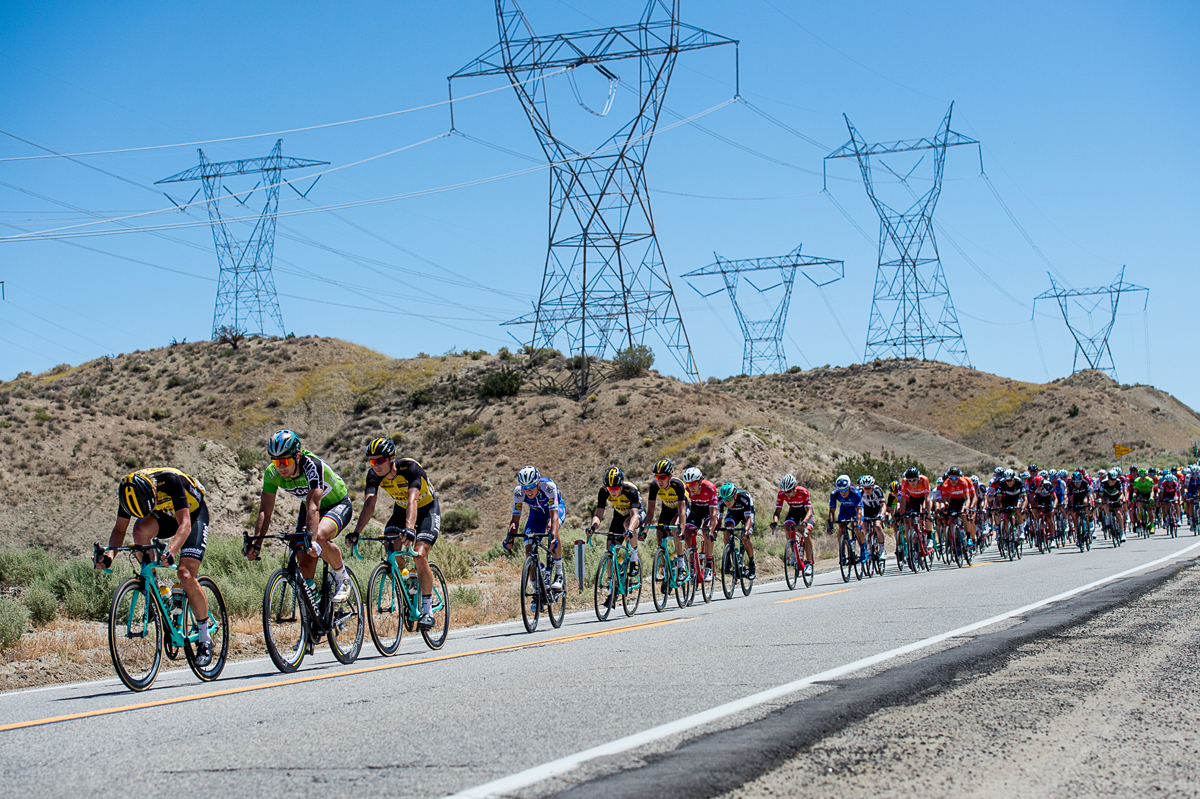
Stage 7 closed out the race with a mostly downhill rip starting at Mountain High Ski Resort and finishing 78 miles later in beautiful, historic downtown Pasadena. Once again, Evan Huffman of the Continental team Rally Cycling rode in a long breakaway with several other riders outsprinting them to win the stage. George Bennett (Team Lotto NL-Jumbo) held on to the yellow jersey to win the overall race.
This really did turn into a David vs. Goliath story. Two stages out of the seven were won by Huffman. Amazingly, a smaller lower level Continental team managed to upstage the top World Tour teams twice in one race. Impressive.

